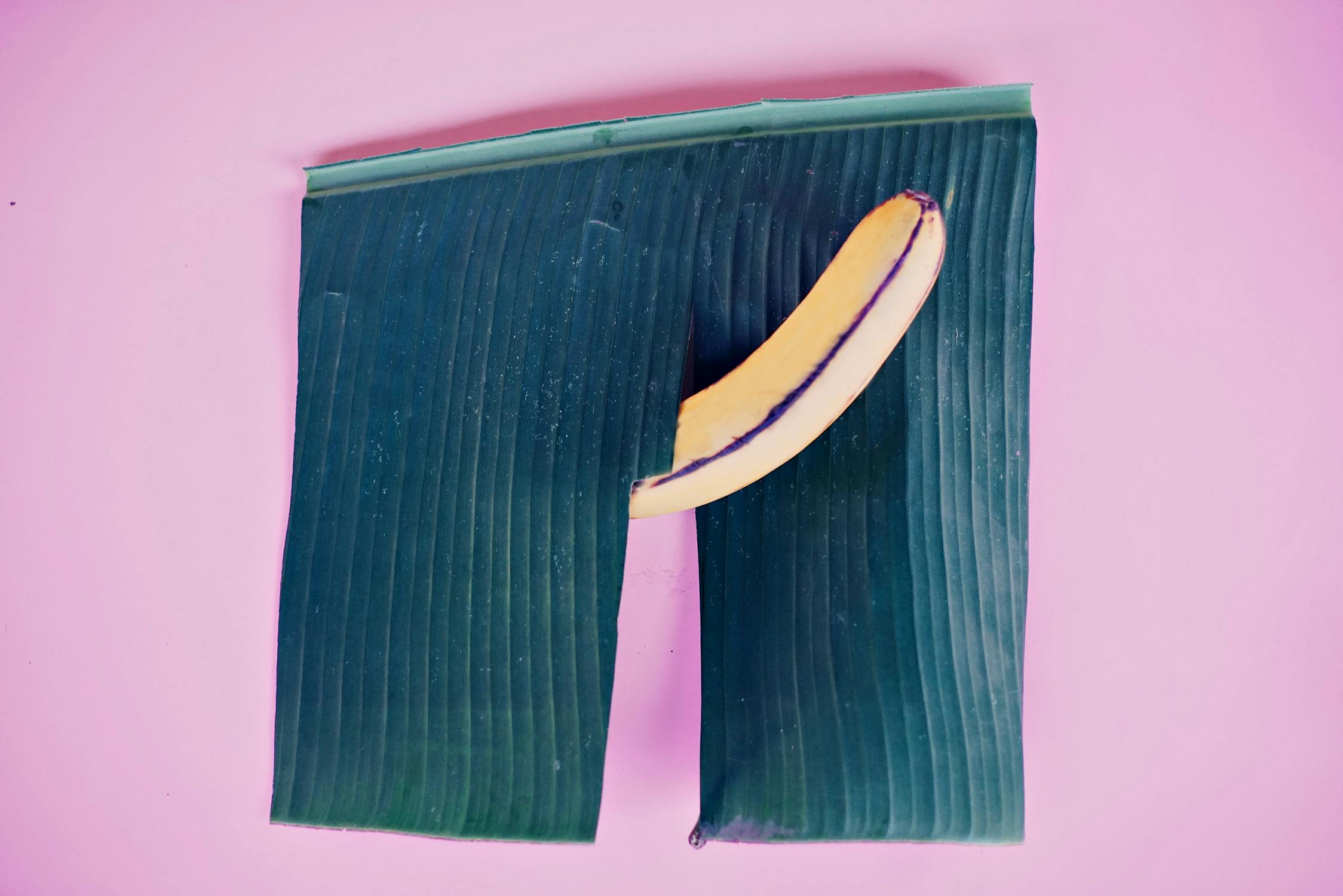Kale Mediterranean Salad with Farro and Lentils
[ad_1]
Medically reviewed by Shahzadi Devje, Registered Dietitian (RD) & Certified Diabetes Educator (CDE)
This Mediterranean salad is made with nutritious ingredients, doused in a flavourful vinegar-based dressing bound to make you drool. It’s perfect if you’re on the hunt for healthy lunch salads because it’s made with farro, lentils, avocados, fresh herbs and olives. This recipe is vegan, gluten-free, and part of my diabetes-friendly and heart healthy series.

As a registered dietitian and certified diabetes educator, I often get asked about alternative grains in recipes. Farro is one of my favourites because it’s packed with fibre and protein, making it a satisfying and filling option.
This Mediterranean salad is a great way to use farro, and it’s perfect if you’re looking for new ways to incorporate this grain into your dishes. And what a way to add colour and deliciousness to your diet! The mix of greens, onion, avocados, farro and lentils provides a wonderful balance that makes the ideal nutritious salad.
The textures are amazing too–the creaminess of the avocado, the crunch of the raw onion, and the chewiness of the farro and lentils. For all plant enthusiasts (and skeptic friends!) out there, this vegan salad will knock your socks off.
Here’s why I would gladly savour this Mediterranean salad for lunch any day:
- most of the ingredients can be prepped ahead of time
- it literally takes about five minutes to assemble
- it goes with just almost anything
- it’s a healthy Mediterranean recipe to take to potlucks, work and picnics

My salad collection is, without a doubt, one of the most popular on the site. I think you’ll agree that sometimes we get into a rut and start eating the same dull salad day after day.
If you’re on the hunt for a little recipe inspiration, I hope you’ll be excited with some of our family’s favourite salad recipes, like this Kale Salad with Spicy Roasted Chickpeas, or Spicy Chicken Salad, and this Vegan Za’atar Salad is a must-try.
By all means, please also add this delicious vegan farro salad to your recipe repertoire as well.
What does a Mediterranean Salad contain?
A Mediterranean salad is a type of salad that typically contains:
- cucumber
- tomatoes
- feta cheese
- red onion
- olives
While there is no set guideline, I also love to add:
- avocados for creaminess
- fresh herbs for brightness
- farro for heartiness
- lentils for protein and fibre
On the whole, many of these ingredients are also part of the Mediterranean diet food list.
Let’s begin by describing the building blocks of a Mediterranean salad. The base, body, garnish, and dressing are the layers. Each layer adds distinct tastes and textures that complement one another to form a wholesome, nutritious salad.
The base
Leafy greens are the foundation of many salad recipes. I like to use a mix of greens for both flavour and nutrition. Lettuce, kale, spinach, and collard greens are all delicious options to use as a base.
The body
This is the layer that makes the salad more filling and substantial. I usually add whole grains and legumes such as quinoa, farro, barley, buckwheat, and brown rice Chickpeas, black beans, and lentils also provide plenty of protein, fibre and nutrients.
Garnishes
Tomatoes, red onions, parsley, olives, and avocado may all be used as garnishes for your salad. Non-vegans might enjoy a sprinkle of feta cheese for extra flavour.
Dressing
There are endless possibilities when it comes to salad dressing.
I have a bunch of healthy salad dressings recipes you can choose from. For this particular salad, though, I developed a simple vinegar-based dressing. It’s light, refreshing, and doesn’t overshadow the other ingredients in the salad.
You asked: how many calories are in a salad?
The answer: it depends.
A salad can be high in calories if it contains many high-calorie ingredients, such as croutons, dried fruit, nuts, seeds, cheese, and creamy dressings. Of course, portion size also matters.
When selecting a salad, another thing to keep in mind is the specific type of dressing used. Mayonnaise-based dressings are typically higher in calories, while vinegar-based dressings have lower calorie counts.
If you’re looking for a low-calorie salad, opt for a lighter dressing, and stick to leafy greens and vegetables.
The green leaves in salads are usually lower calories; for instance, kale provides 49 calories per 100-gram portion. Cucumbers and tomatoes are low in calories, too – with approximately 50 calories for every 100 grams.
While a higher number may appear intimidating, it is essential to remember that “higher in calories” does not imply “unhealthy” or “bad.” For example, avocados contain many nutrients, with studies suggesting that avocado consumption can help support cardiovascular health, improve blood pressure control, and reduce inflammation. Additionally, avocados are a great source of healthy fats.

You asked: what is the healthiest dressing for a salad?
While “healthy” is a vague term, I think enjoying higher-calorie salad dressings is OK from time to time. However, having salad dressing alternatives that include nutritious ingredients may encourage you to consume more salads.
Vinegar and oil-based dressings are lovely substitutes for creamy salad dressings, which are typically higher in saturated fat.
“Fat-free” dressings may appear to be the “healthiest.” And if you’re really dedicated to fat-free, go for a lower-fat variety rather than low fat. That’s because some fat will assist your body in absorbing important nutrients from veggies.
Vinaigrettes, for example, are excellent examples to consider. And although store-bought alternatives are more convenient, keep in mind that most dressings just require a handful of ingredients and only take a few minutes to prepare.
Best vinegar for salad
When it comes to kinds of vinegar, the options are seemingly endless. Despite this, not all types of vinegar are created equal in taste.
The best vinegar for salads, in my opinion, is apple cider vinegar. It has a slightly sweet taste that pairs well with the bitterness of greens.
Balsamic vinegar is another excellent option for salads. It’s fruitier and sweeter than apple cider vinegar but still has a bit of that desired acidity.
If you’re looking for something different, experiment with rice vinegar or champagne vinegar.
Ingredients

- Farro: I chose the pearl variety of farro for this recipe because it’s the quickest cooking.
- Vegetable stock: to keep your salad from being too salty, use unsalted or low-sodium vegetable stock instead of the salt shaker. The farro is cooked in stock to enhance its taste.
- Sea salt: to season your Mediterranean salad.
- Olive oil (extra virgin): used in the dressing.
- Apple cider vinegar gives the salad a perfect balance of acidity to the mix. Some studies suggest that apple cider vinegar is a diabetes-friendly option as it might lower blood sugar levels.
- Dijon mustard: for a little bit of zing in the dressing.
- Garlic (cloves): for flavour. Garlic is recognized for possessing antimicrobial properties.
- Black Pepper (course): in the Devje family household, we put black pepper on just about everything. We adore the sharp but mild touch it adds to food.
- Kale: I love using kale in salads because it’s sturdy and doesn’t wilt as quickly as other greens. Plus, kale has an excellent nutrient profile and high antioxidant activity.
- Red onion: for a little bit of sweetness and crunch.
- Parsley: flat leaf parsley is my go-to for this salad. I love its flavour.
- Avocados: for healthy fats and a creamy texture. Just make sure they’re not overly ripe, or they’ll turn to mush.
- Lentils (brown): I used cooked, canned brown lentils because they hold their shape well. You want to make sure you choose a brand that isn’t mushy.
- Olives (kalamata): because a Mediterranean salad isn’t complete without olives!
- Chia seeds: for a little bit of crunch and extra nutrients.
How to make it – step by step
Making this healthy lunch salad is very easy and will be ready to serve in no time.






- Drain the lentils and spread them out on a tea towel to remove any excess moisture (Step 1).
- Then, add the vegetable stock and farro to a medium pan. Bring to a boil over medium-high heat. Then, reduce the heat to medium and simmer for 15-20 minutes or until the farro is tender (al-dente) – Step 2.
- Remove from the heat, transfer the farro to a broad flat platter, and spread it out, so it doesn’t clump while you work on the salad ingredients. Allow the farro to cool (Step 3).
- In a large mixing bowl, whisk together the dressing ingredients: olive oil, apple cider vinegar, dijon mustard, garlic, salt and pepper (Step 4).
- Next, add the kale and mix well with tongs, making sure all the kale is coated with the dressing. Then, add the farro, onion, parsley, avocados, lentils and olives to the bowl and mix everything until combined (Step 5).
- Serve at room temperature, topped with chia seeds (Step 6).
You can find the complete ingredient list, along with detailed instructions, in the recipe card below.
Tips
- Use lentils that don’t fall apart and avoid overcooking the farro.
- Rather than chopping the kale, use your hands to rip it into smaller leaves. It’s less work and the salad will have a more rustic look.
- This Mediterranean salad is best enjoyed fresh – instead of making a big batch, I recommend making smaller batches more often.
- If you’re taking this salad to work or on a picnic, pack the dressing separately and mix everything together just before eating.
Nutrition information per serving
This Mediterranean salad delivers abundant nutrients that I’m thrilled to share. It satisfies a number of your daily nutrient requirements in one serving:
- 19 grams of protein per serving
- 36 grams of net carbohydrates (for my diabetes community, counting carbs)
- Fulfills 112% of your DV for fibre
- An excellent source of vitamin C
- Good source of vitamin A
- Excellent source of iron
- Rich source of potassium
*Percent Daily Values are based on a 2000 calorie diet
Nutrition benefits of farro
If you’re not familiar with farro, it’s a nutrient-rich whole grain packed with fibre, protein, important vitamins and minerals. It’s also low on the glycemic index, making it an excellent option for those with type 2 diabetes or pre-diabetes.
The glycemic index is a ranking of carbohydrate-containing foods based on their potential to raise blood sugar levels. Foods with a low glycemic index (55 or less) are slowly digested and absorbed, resulting in gradual rises in blood sugar and insulin levels. This is beneficial for people with diabetes or pre-diabetes as it can help to manage blood sugar levels.
Some of the key nutrients in farro include:
| Nutrient and calories | Amount | %DV |
| Protein | 12.8 g | 26% |
| Dietary Fiber | 10.6 g | 38% |
| Fat | 2.1 g | 3% |
| Iron | 1.5 mg | 9% |
| Protein | 9.7 g | 19% |
| Saturated fat | 0 g | 0% |
| Sodium | 6 mg | 0% |
| Magnesium | 128 mg | 30% |
| Niacin | 8.5 mg | 53% |
| Total carbohydrate | 72.3 g | 26% |
| Calories | 362 kcal |
The nutrition data is taken from the USDA to calculate the % DV for 100 grams of farro. Percent Daily Values (DVs) are based on a 2000-calorie diet. Interpretation of DVs from US FDA.

Variations and storage
This Mediterranean salad is super versatile and can be easily customized to your liking.
- Consider adding other vegetables such as grilled vegetables, cucumbers or tomatoes. You could also throw in citrus fruits like oranges or grapefruit.
- If you’re not a fan of kale, feel free to use other leafy greens such as spinach or arugula.
- Sprinkle feta cheese, goat cheese or vegan cheese for added creaminess.
- If you prefer, you can use regular mustard instead of dijon mustard for the salad dressing.
- Besides chia seeds, you could also use hemp hearts, pumpkin seeds or sunflower seeds for a bit of crunch.
This Mediterranean salad is best eaten straight away. You can store it in the fridge for up to a day. However, it will not be as fresh and the avocado chunks will turn brown.
Howver, if you want to meal prep this salad, cook the farro ahead of time, and prep all the veggies and store them in the fridge. Then, when you’re ready to eat, simply mix everything together – including the dressing. It couldn’t be easier!
What are your favourite easy healthy salad recipes? Let me know in the comments below.

I’d love to hear from you if you try this Kale Mediterranean Salad recipe with farro and lentils! Rate it, or share a photo and hashtag #desiliciousrd on Instagram. Can’t wait to see your photos.
Kale Mediterranean Salad with Farro and Lentils
Print
Pin
This Mediterranean salad is made with nutritious ingredients, doused in a flavourful vinegar-based dressing bound to make you drool. It’s perfect if you’re on the hunt for healthy lunch salads because it’s made with farro, lentils, avocados, fresh herbs and olives. This recipe is vegan, gluten-free, and part of my diabetes-friendly and heart healthy series.
Cuisine Mediterranean
Servings: 4 servings

Ingredients
Homemade dressing with apple cider vinegar
Mediterranean salad
- 6 stalks kale medium-sized, washed and dried, leaves only, torn into small pieces
- ½ red onion medium, finely chopped
- 1 cup parsley packed cup, flat leaf, washed and dried, finely chopped
- 2 avocados small, cut into small chunks
- 1 cup lentils brown, canned, drained, not mushy
- ¼ cup Kalamata olives whole
- 1 tbsp chia seeds
Instructions
Cooking farro
-
Add the vegetable stock and farro to a medium pan. Bring to a boil over medium-high heat (usually takes about 1 minute). Reduce the heat to medium and simmer for 15-20 minutes or until the farro is tender (al-dente)
-
Remove from the heat, transfer the cooked farro to a broad flat platter, and spread it out, so it doesn’t clump while you work on the salad ingredients. Allow the farro to cool
Homemade dressing with apple cider vinegar
-
In a large mixing bowl, whisk together the dressing ingredients: olive oil, apple cider vinegar, dijon mustard, garlic, salt and pepper
Mediterranean salad assembly
-
Add the kale and mix well with the tongs, making sure the kale leaves are coated with the dressing
-
Add the farro, onion, parsley, avocados, lentils and olives to the bowl and mix everything until combined. Serve at room temperature, topped with chia seeds
Notes
- Use lentils that don’t fall apart and avoid overcooking the farro.
- Drain the lentils and spread them out on a tea towel to remove any excess moisture.
- Rather than chopping the kale, use your hands to rip it into smaller leaves. It’s less work and the salad will have a more rustic look.
- This Mediterranean salad is best enjoyed fresh – instead of making a big batch, I recommend making smaller batches more often.
- If you’re taking this salad to work or on a picnic, pack the dressing separately and mix everything together just before eating.
Nutrition Facts
Kale Mediterranean Salad with Farro and Lentils
Amount Per Serving
Calories 537
Calories from Fat 225
% Daily Value*
Fat 25g38%
Saturated Fat 4g20%
Trans Fat 1g
Polyunsaturated Fat 4g
Monounsaturated Fat 16g
Sodium 784mg33%
Potassium 1190mg34%
Carbohydrates 64g21%
Fiber 28g112%
Sugar 5g6%
Protein 19g38%
Vitamin A 1625IU33%
Vitamin C 36mg44%
Calcium 112mg11%
Iron 6mg33%
* Percent Daily Values are based on a 2000 calorie diet.
Please note the nutritional analysis values are estimates and suggestions. This nutrition facts table does not know your life – your body, including your hunger and satiety cues, change daily. It’s okay to eat more or less. Say no to food guilt and instead embrace mindful eating.

[ad_2]
Source link











